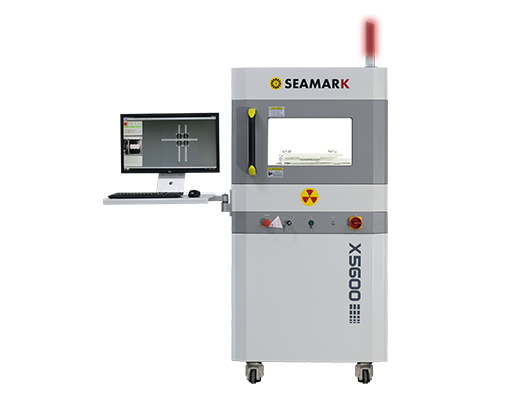
In today's world, where technological advancements have revolutionized various industries, welding continues to play a crucial role in manufacturing and construction processes. As welded structures bear heavy loads and are integral to the overall integrity of a project, it is essential to maintain stringent quality control measures. This is where the importance of weld x-ray inspection machines comes into play. In this blog post, we will delve into the significance of welding inspection x-ray machines and discuss the relevant standards and codes that guide this inspection process.
Weld x-ray inspection machines serve as an indispensable tool in evaluating the quality of welds and detecting any defects or discontinuities that are invisible to the naked eye. By using electromagnetic radiation, these machines create a detailed image of the weld, enabling inspectors to identify potential issues such as cracks, porosity, or inclusions. This non-destructive testing method not only saves time and costs but also ensures the safety and reliability of welded structures.
To ensure consistency and accuracy in the inspection process, various standards and codes have been established by international organizations and regulatory bodies. One widely recognized standard is the ASME Boiler and Pressure Vessel Code, which provides guidelines for the design, fabrication, and inspection of welded pressure vessels. The American Welding Society (AWS) also sets forth codes such as AWS D1.1, which focuses on structural welding requirements for buildings, bridges, and other similar structures. These standards outline the necessary procedures, qualifications, and acceptance criteria for weld x-ray inspections.
Implementing x-ray weld inspection equipment offers numerous benefits for both manufacturers and end-users. Firstly, it enhances quality control by providing accurate and reliable data on weld integrity, thus minimizing the risk of structural failures. The early detection of defects ensures timely repairs, preventing costly rework or potential accidents. Additionally, these machines offer increased productivity as they can inspect multiple welds within a short period, enabling faster completion of projects. Furthermore, the use of weld x-ray inspection machines improves documentation and traceability, allowing for a robust quality assurance process.
| Offline X-Ray Inspection Machine | Inline X-Ray Inspection Machine |
 |  |
| Industrial Microfocus X-Ray 3D/CT Machine | |
 |
In conclusion, weld x-ray inspection machines play a vital role in maintaining the integrity and safety of welded structures. By adhering to internationally recognized standards and codes, manufacturers and inspectors can ensure consistent and reliable weld evaluations. The benefits of using these machines, such as improved quality control, enhanced productivity, and proper documentation, cannot be overstated. As technology continues to evolve, it is crucial for industry professionals to embrace tools like weld x-ray inspection machine to stay ahead in the ever-changing landscape of welding. So, let us prioritize the use of advanced technologies like xray weld inspections machines and elevate the standards of weld quality and safety in every project we undertake.
What is x-ray welding?
It refers to the use of X-ray inspection methods to evaluate welded joints rather than performing welding with X-rays. These X-ray inspection systems use high-energy electromagnetic radiation to create detailed internal images of welds, enabling detection of hidden defects such as cracks, porosity, inclusions, and lack of fusion.
How does weld xray inspections equipment ensure welding quality?
It ensures welding quality by enabling non-destructive, high-resolution internal inspection of welds, detecting hidden defects, supporting reliable process control, and reducing risk of failure. By visualising the internal condition of a weld rather than just the external appearance, it significantly enhances weld quality assurance.
What are advances in weld x-ray inspection?
Weld X-ray inspection has advanced significantly through digital imaging, automation in defect detection, higher resolution imaging, tighter integration into production, and expansion into more demanding sectors. These advances help manufacturers ensure weld integrity, boost quality assurance, reduce defects, and support complex welding applications.
What are benefits of using welding X-ray machine?
Non-destructive testing (NDT) of welds
Ability to detect hidden/internal defects
High precision and accuracy
Early detection and prevention of failures
Improved process control and quality assurance
Applicability across materials and industries
 EN
EN
 es
es  ko
ko  de
de  it
it  ru
ru  pt
pt  th
th  ar
ar  pl
pl  vi
vi  tr
tr